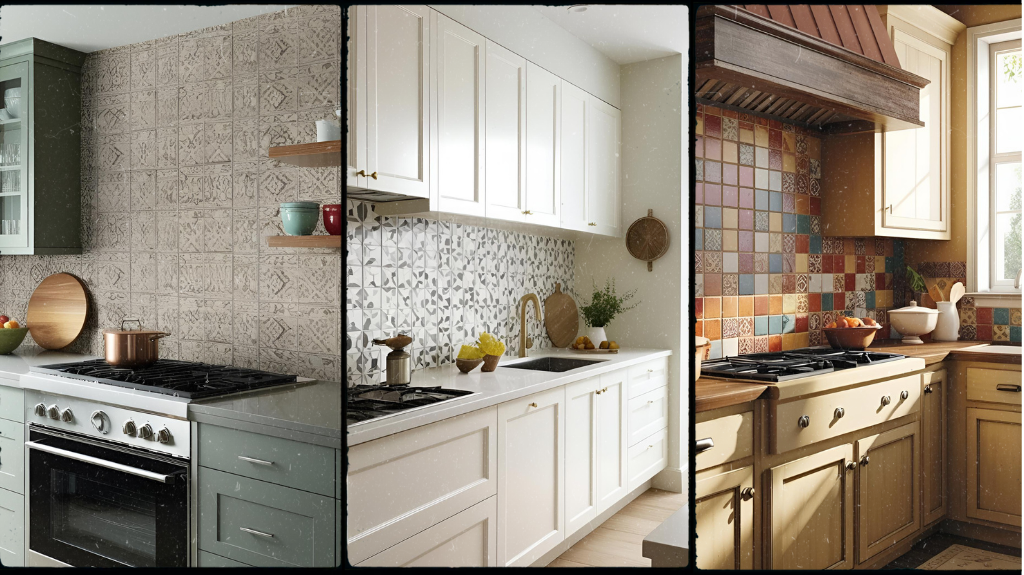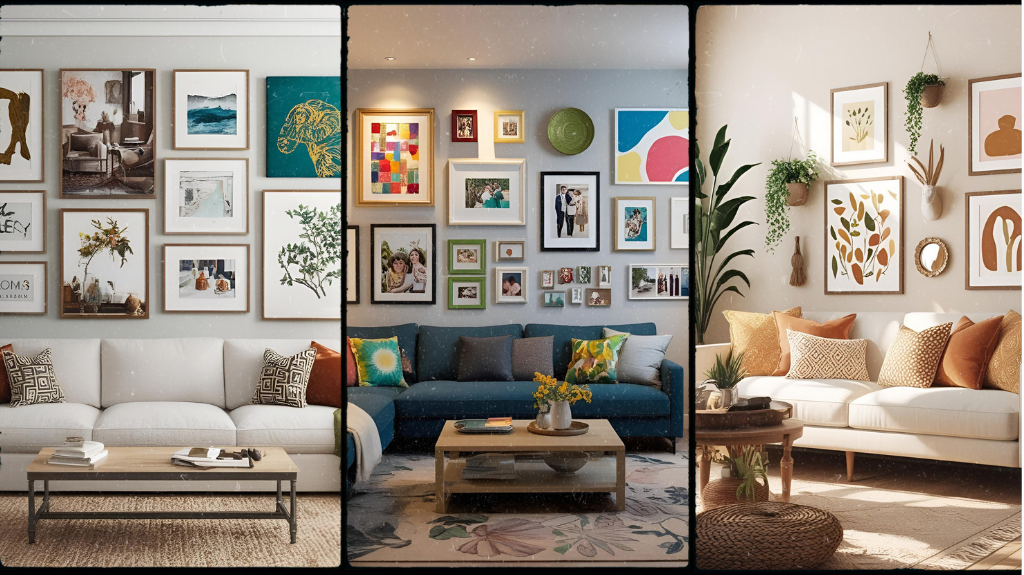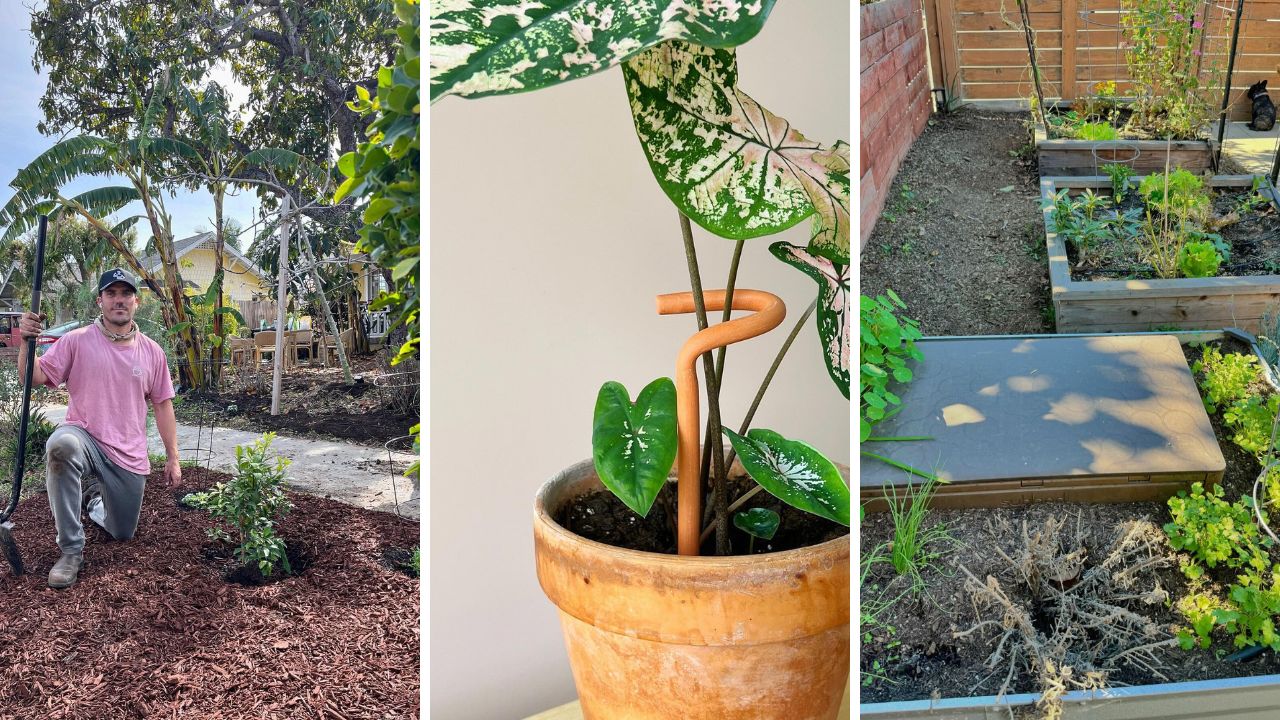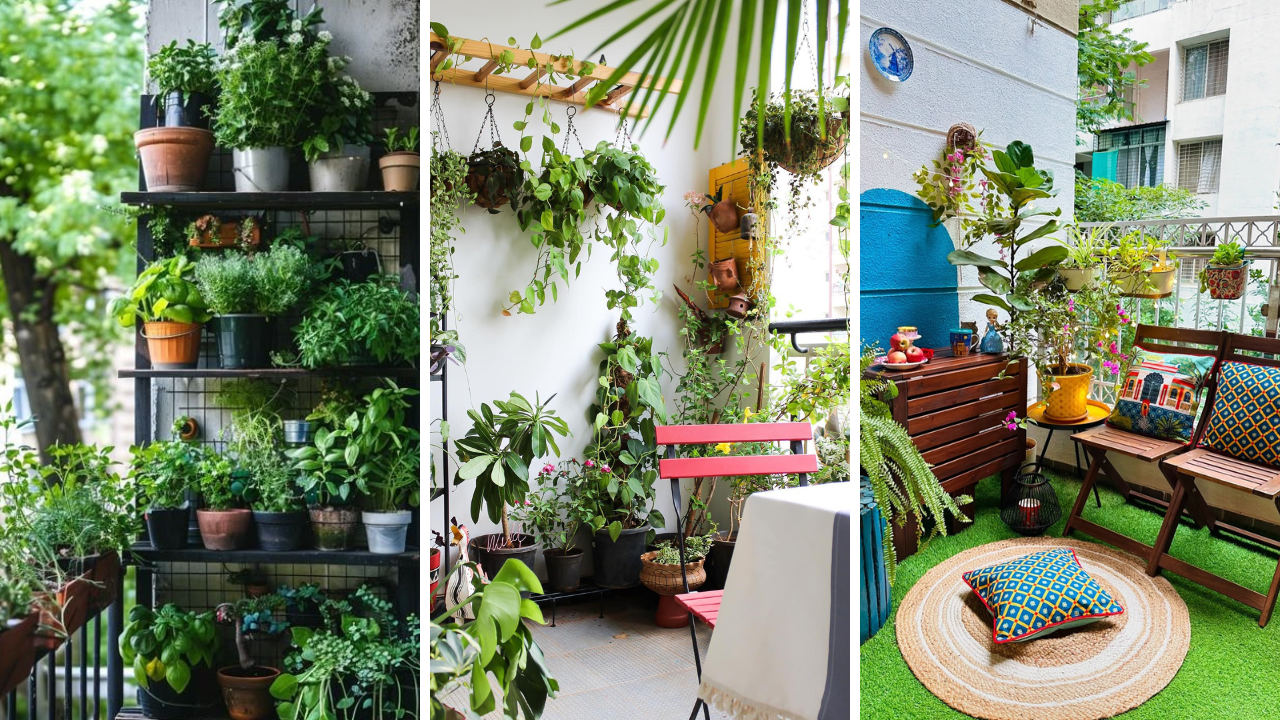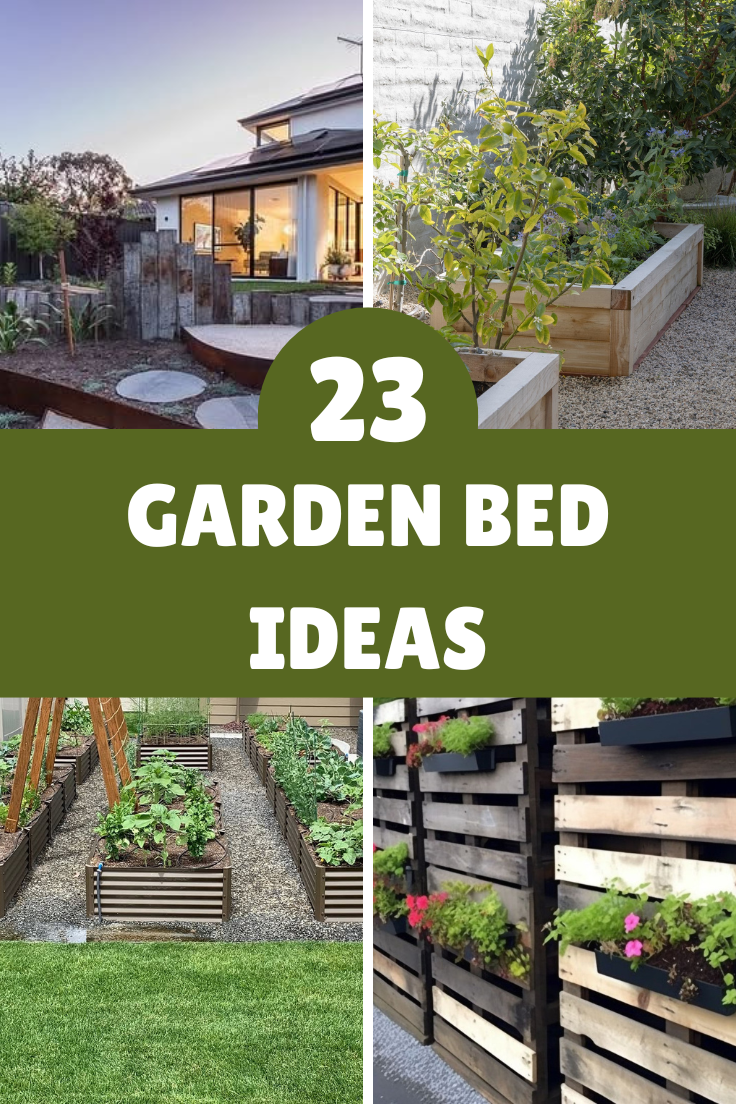
Creating a beautiful garden is one of the most satisfying ways to enhance your home and outdoor space. But let’s face it: setting up a garden bed can often seem daunting, especially when you’re starting with nothing more than an empty plot. The good news is that DIY garden bed ideas don’t need to be complex or cost a fortune! Whether you’re a seasoned gardener or a beginner, there are plenty of creative and simple ways to build your own garden beds that will not only save you money but also give your garden a personal touch. In this post, I’ll walk you through 23 different garden bed ideas anyone can tackle, no matter your skill level. Along the way, I’ll share a few product recommendations from Amazon that will make your DIY projects even easier and more efficient. Let’s dive into these fantastic garden bed ideas that you’ll be proud to show off!
1. Classic Raised Garden Bed
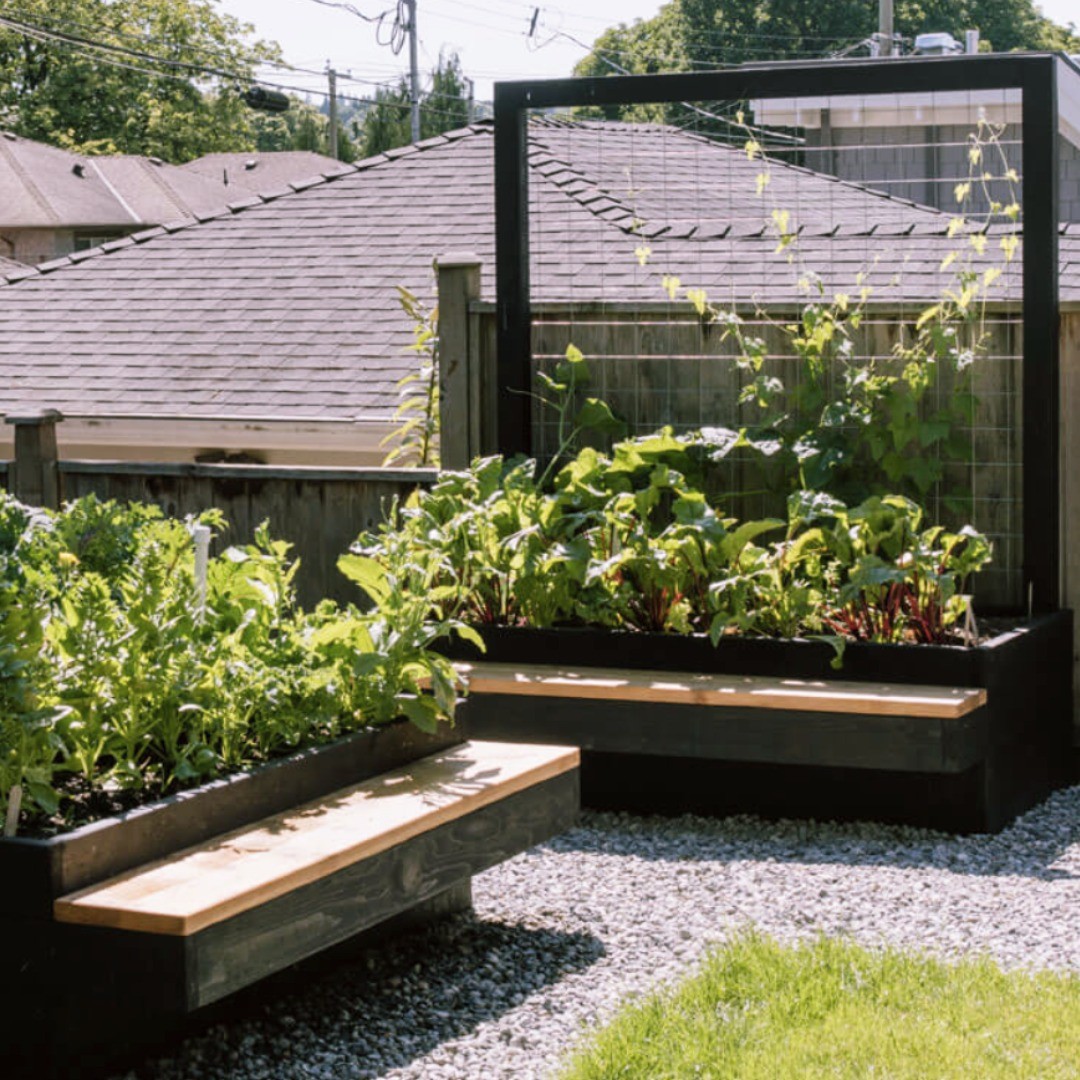
source @vvictorygardens
Raised garden beds are the quintessential choice for gardeners who want to keep their plants away from poor soil or pests. The basic principle behind a raised bed is that it allows you to control the soil quality, drainage, and access to your plants. You can easily create a raised garden bed using wood planks, bricks, or cinder blocks, and the elevated structure also makes gardening less physically taxing. It’s an accessible choice for both beginners and seasoned gardeners. With a wide range of styles, including rectangular and square designs, this option offers flexibility for any garden size or shape. Raised beds help plants thrive by providing optimal soil conditions and drainage, and they also make it easier to weed and harvest your crops. It’s a simple, but highly effective, DIY garden project that will pay off in a beautiful, thriving garden.
2. Wooden Pallet Garden Bed
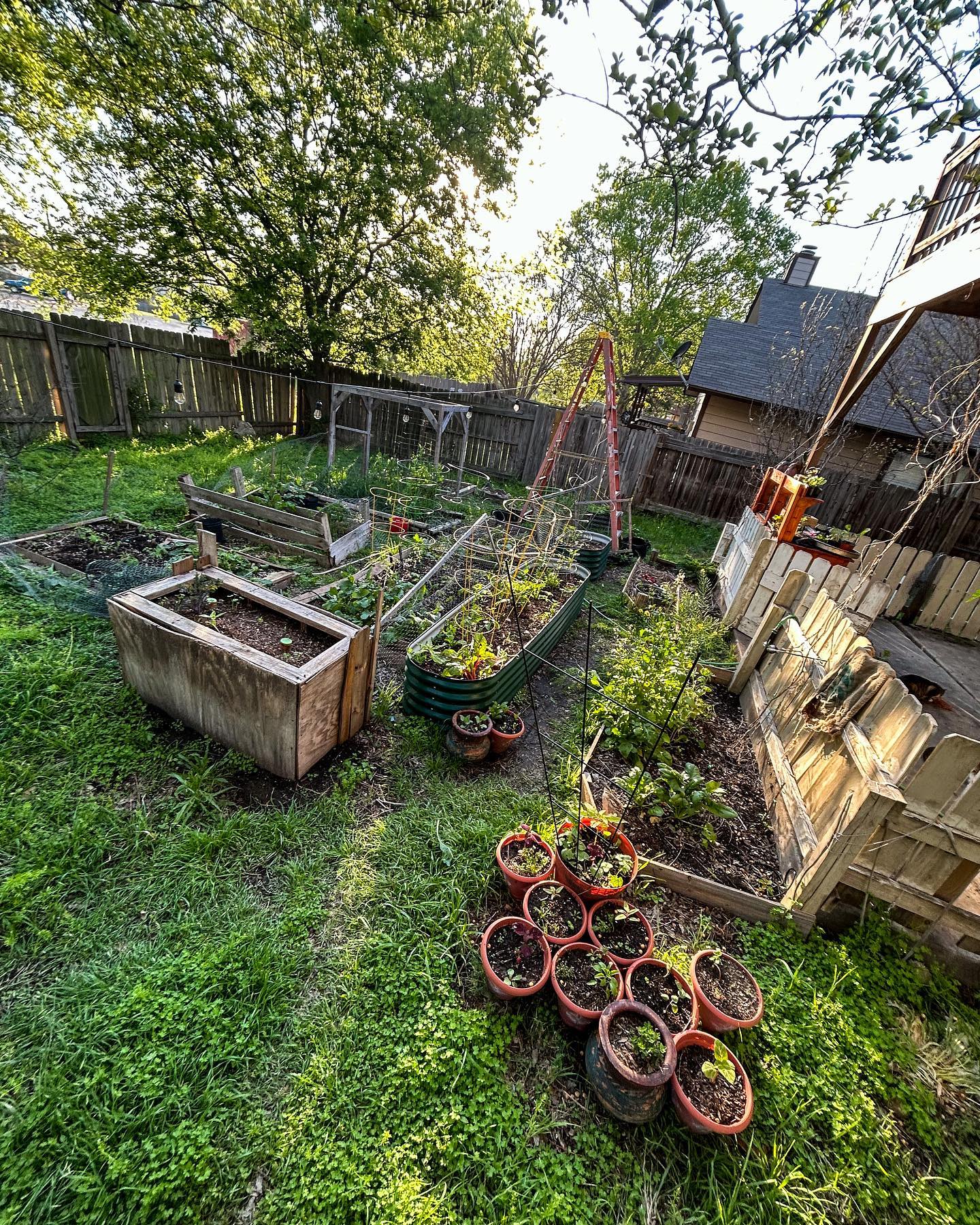
source @gardens_better_with_cats
Wooden pallets are a fantastic recycled material that can be transformed into a rustic, charming garden bed. You can find pallets at most hardware stores, or even better, pick them up for free from businesses that no longer need them. The beauty of this design is its simplicity – all you need to do is disassemble the pallet, lay it flat on the ground, and line it with landscape fabric to prevent weeds. From there, fill the space with nutrient-rich soil, and you’ve got yourself a functional, stylish bed. You can also stack several pallets to create multiple levels, adding dimension to your garden. The rough, weathered texture of the wood adds a rustic charm to your space, and the cost is incredibly low, especially if you’re able to find free pallets. If you’re looking for an affordable and eco-friendly option, this is a great choice.
3. Cinder Block Garden Bed
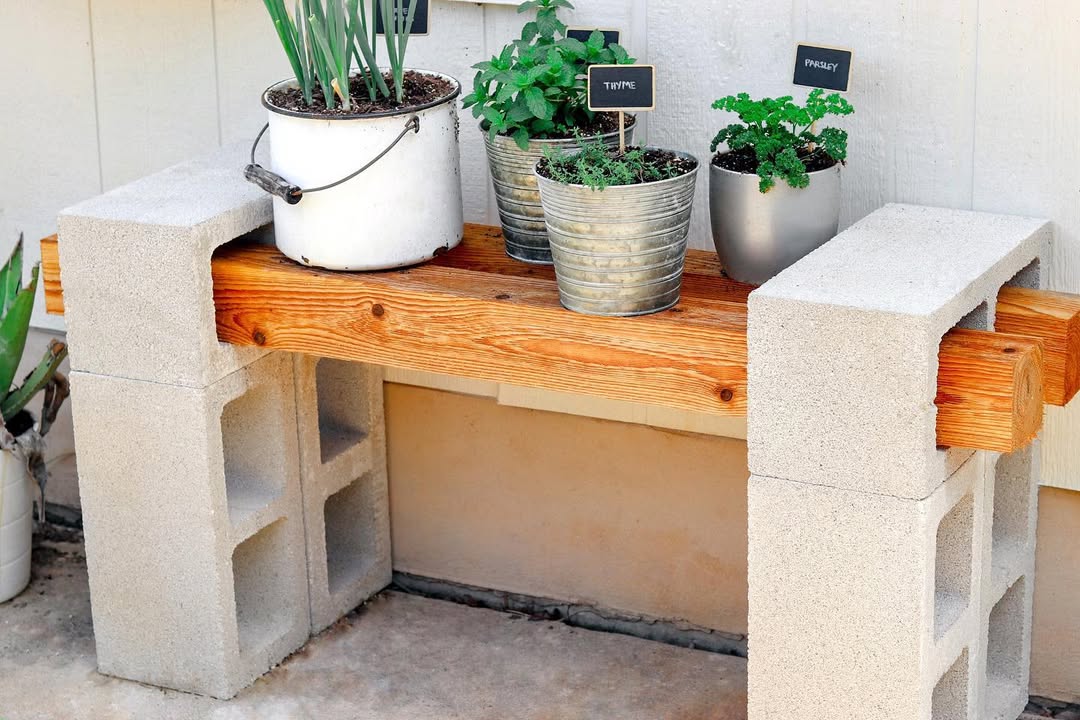
source @fabeveryday
Cinder blocks are another sturdy, affordable material that can be used to build a garden bed that’s both functional and durable. This type of bed is ideal for people looking for a long-lasting solution that doesn’t require too much maintenance. Cinder blocks are readily available at most home improvement stores and are relatively inexpensive. You can stack them to create the bed’s walls, or use them to form a simple rectangular frame. The open holes in the cinder blocks can also be used to plant small flowers or herbs, adding a bit of greenery and a creative touch to the design. Plus, cinder blocks provide great drainage and prevent weed growth, making them perfect for vegetables, flowers, and other garden plants. It’s a great option for small gardens and urban spaces, providing both functionality and style.
4. Tiered Garden Bed
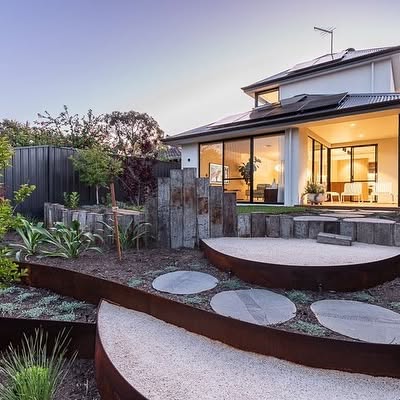
source @instantgardens
If you want to add some visual interest to your garden, a tiered garden bed might be just what you need. This design involves building multiple levels or “tiers” of soil, allowing you to plant a variety of plants at different heights. The tiers create a visually striking effect, and they also maximize your space by giving each plant room to grow. Tiered garden beds are ideal for smaller spaces or areas with varying elevation. They also make it easier to organize plants based on their sunlight and water needs, with each tier offering a slightly different growing environment. Building a tiered bed requires a bit more effort and planning, but the result is well worth it. You can use materials like wood, stone, or brick to create the tiered effect, and the end result is a garden that looks professionally landscaped.
5. Concrete Garden Bed
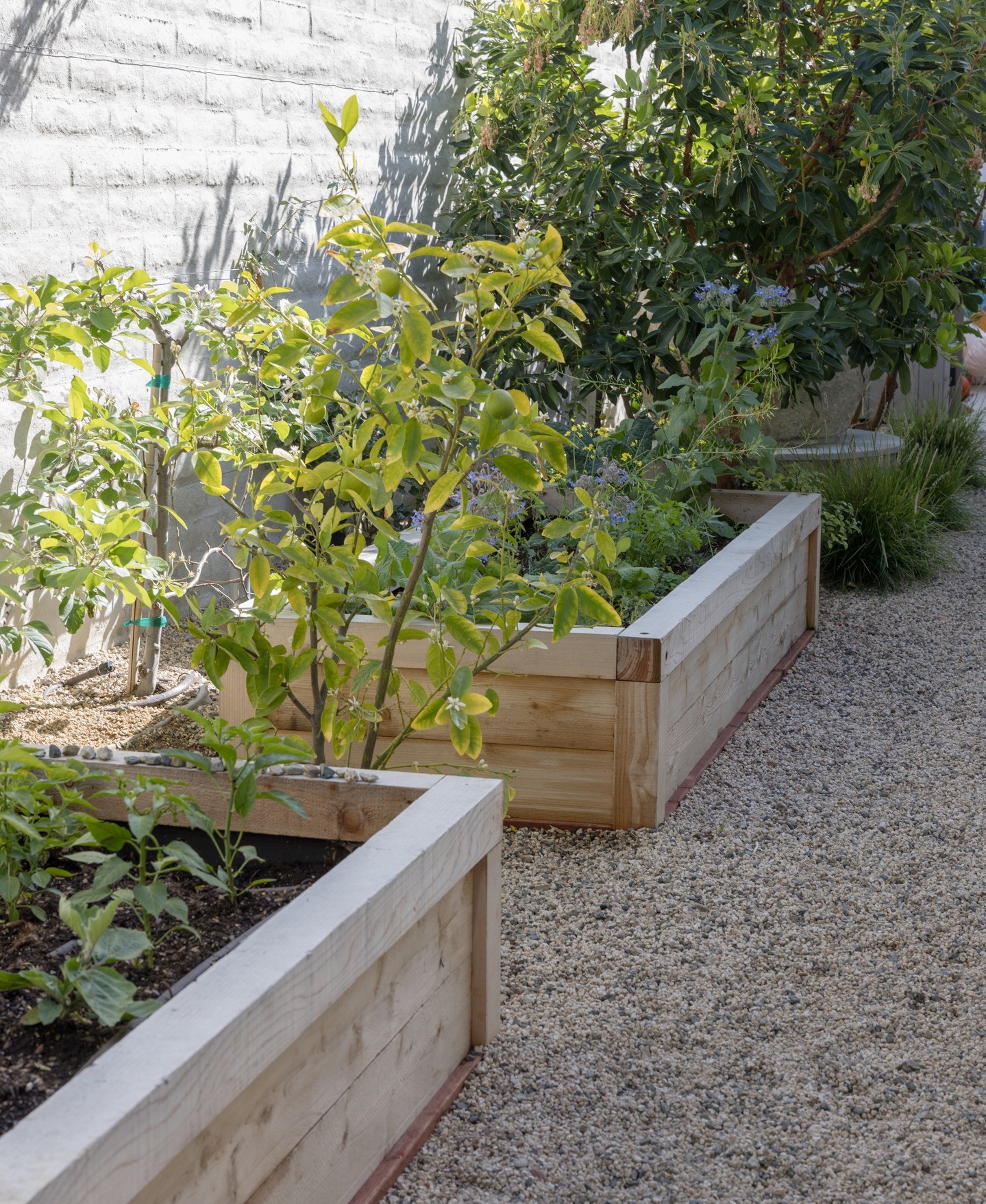
source @gardenstudiodesign
Concrete garden beds offer a modern, sleek option for those looking for a more industrial aesthetic. This material is durable and can be molded into various shapes, making it versatile enough for any garden. Concrete beds also have excellent drainage and are resistant to the elements, which means they can last for years with minimal upkeep. Building a concrete garden bed might require more advanced skills, such as mixing the concrete and creating molds, but it’s a rewarding project for those with a bit of experience. Additionally, concrete provides excellent insulation for your plants’ roots, keeping them at a consistent temperature even in extreme weather conditions. If you want a garden that’s both low-maintenance and long-lasting, concrete beds are a fantastic option.
6. Recycled Metal Planter Bed
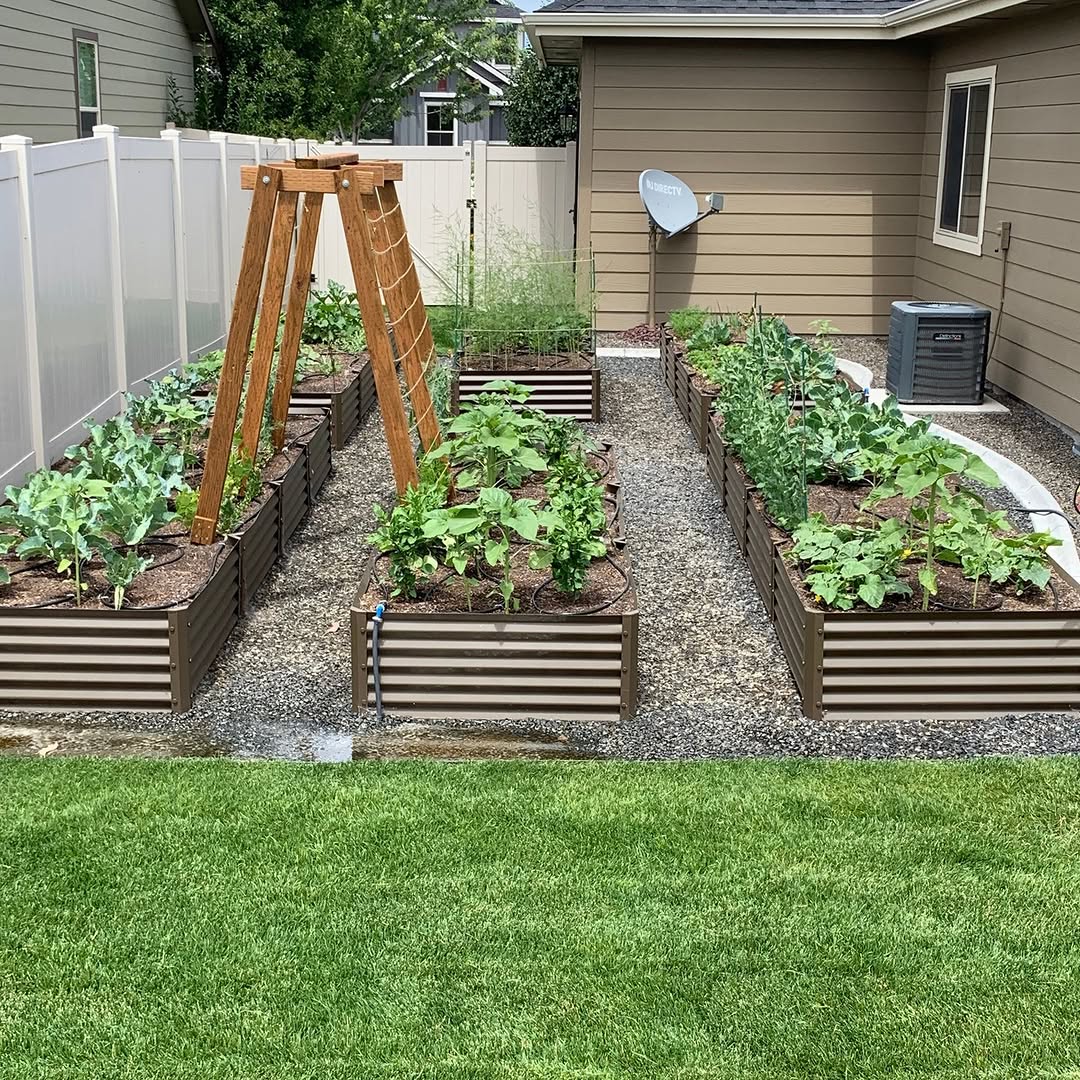
source @metalgardenbeds
For a unique, sustainable option, why not consider creating garden beds from recycled metal containers? Metal planters have a distinctive look and offer the advantage of being highly durable. Old tubs, barrels, or even metal troughs can be repurposed into functional and attractive garden beds. The metal offers a modern, rustic look that can fit into many different garden styles. These beds are particularly good for plants that require good drainage, such as succulents or herbs. They also weather well, developing a patina over time that adds to their character. If you have access to scrap metal or unused containers, this could be an affordable and eco-friendly way to create a unique garden bed.
7. Hanging Vertical Garden Bed
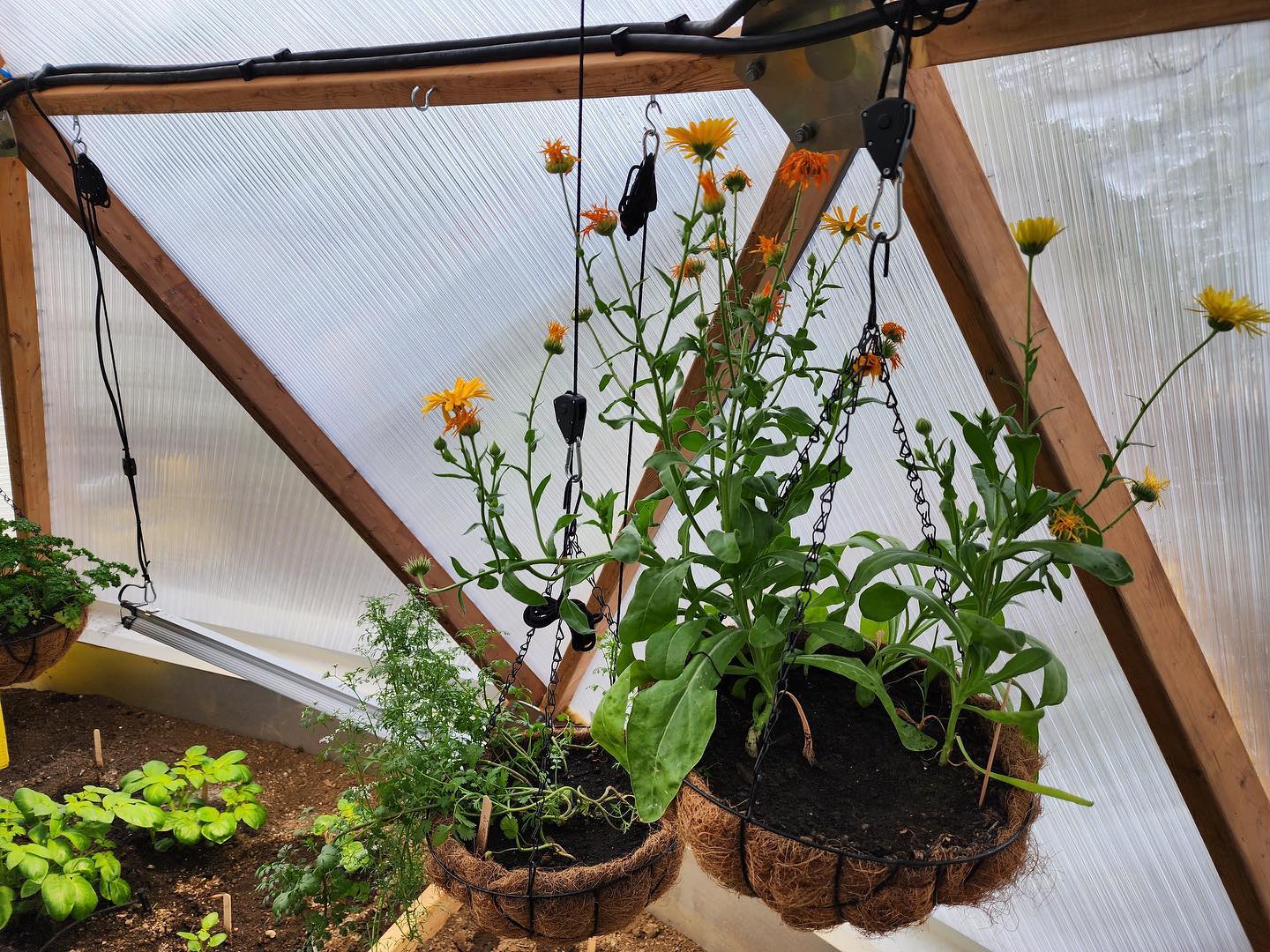
source @greeniglu
If you’re limited by space but still want a garden that’s both beautiful and functional, a hanging vertical garden bed is the perfect solution. By using vertical space, you can grow a variety of plants, from flowers to vegetables, without taking up much ground space. Vertical beds are ideal for apartments, balconies, or small yards. You can create a vertical garden by hanging planters, using a wall-mounted system, or even repurposing old gutters. Hanging vertical garden beds are also great for growing herbs, as they’re easy to access and maintain. The space-saving nature of this design means that it’s especially suited for people who want to maximize their garden’s productivity without the need for a large plot of land.
8. Log Garden Bed
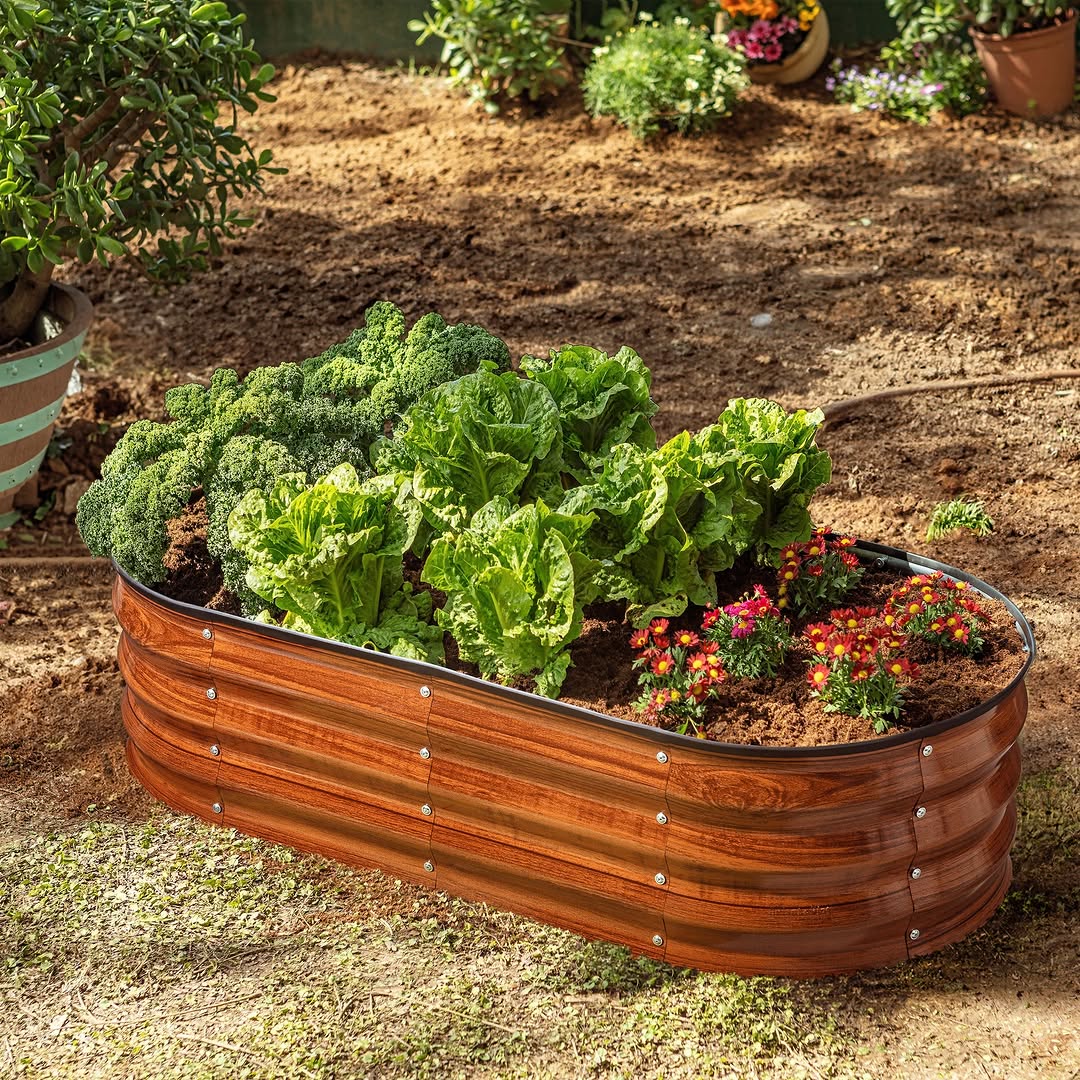
source @plantandplot
For those who love the rustic, woodland feel, a log garden bed is a fantastic option. You can either use logs as edging to form a simple, natural boundary for your garden, or you can use larger logs as the bed itself. This design works well in cottage gardens or forest-inspired landscapes. Log garden beds are easy to build, requiring just a few logs, which you can either source from your property or purchase from a local supplier. The organic look of the wood blends seamlessly with the natural surroundings, creating a peaceful, earthy garden environment. Logs also have excellent drainage, making them suitable for a variety of plant types.
9. Straw Bale Garden Bed
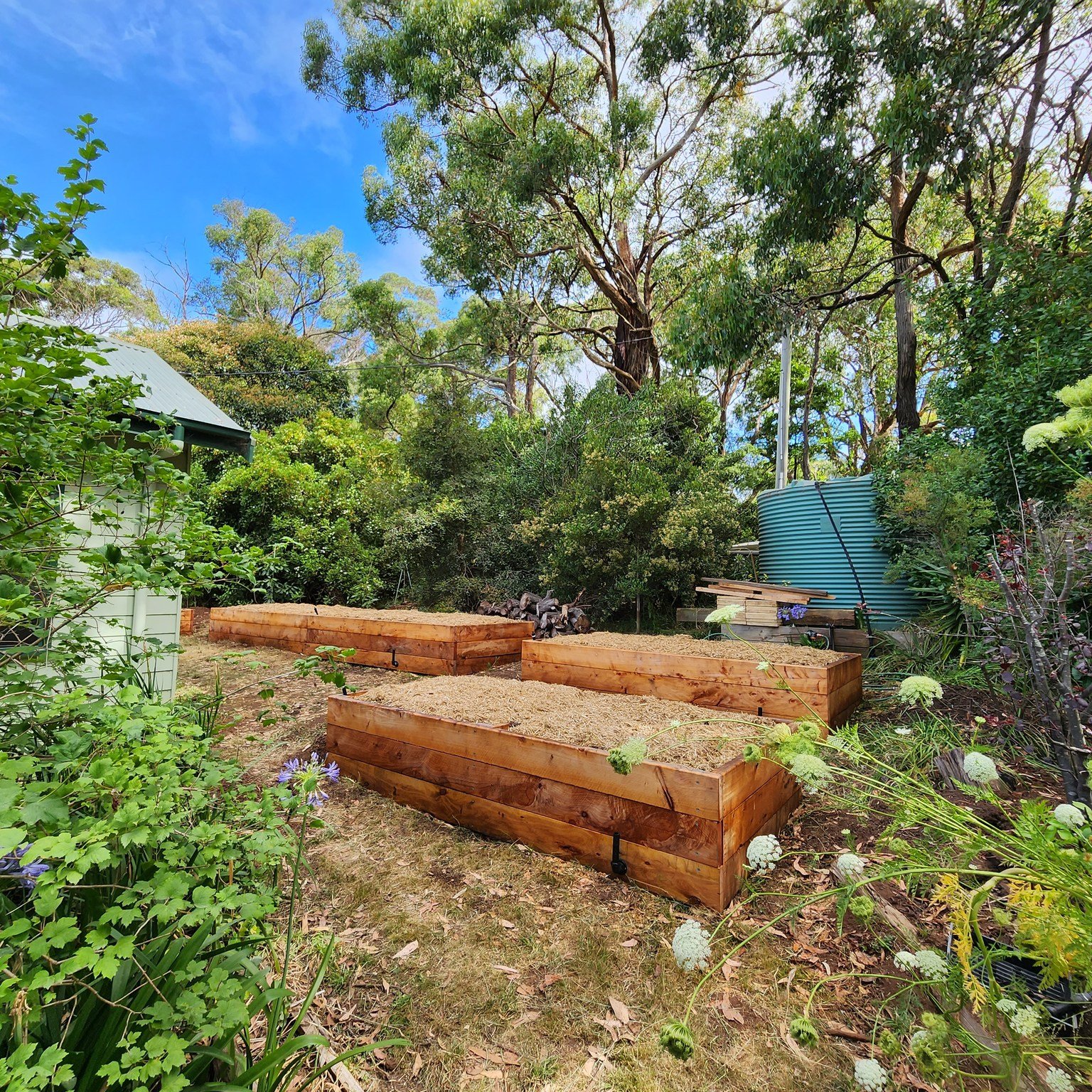
source @veryediblegardens
Straw bale gardening is a clever and low-maintenance way to create a thriving garden bed without the need for traditional soil. Straw bales provide a natural growing medium, which breaks down over time and adds nutrients to your plants. To start, simply arrange the straw bales in your desired shape, water them thoroughly, and then top with a layer of soil. Over time, the bales decompose and become even more fertile. Straw bale beds are an excellent option for people with poor soil quality or for those who want to avoid the backbreaking work of digging and tilling. It’s a great option for anyone, whether you’re a gardening novice or an experienced green thumb.
10. Wicker Basket Garden Bed
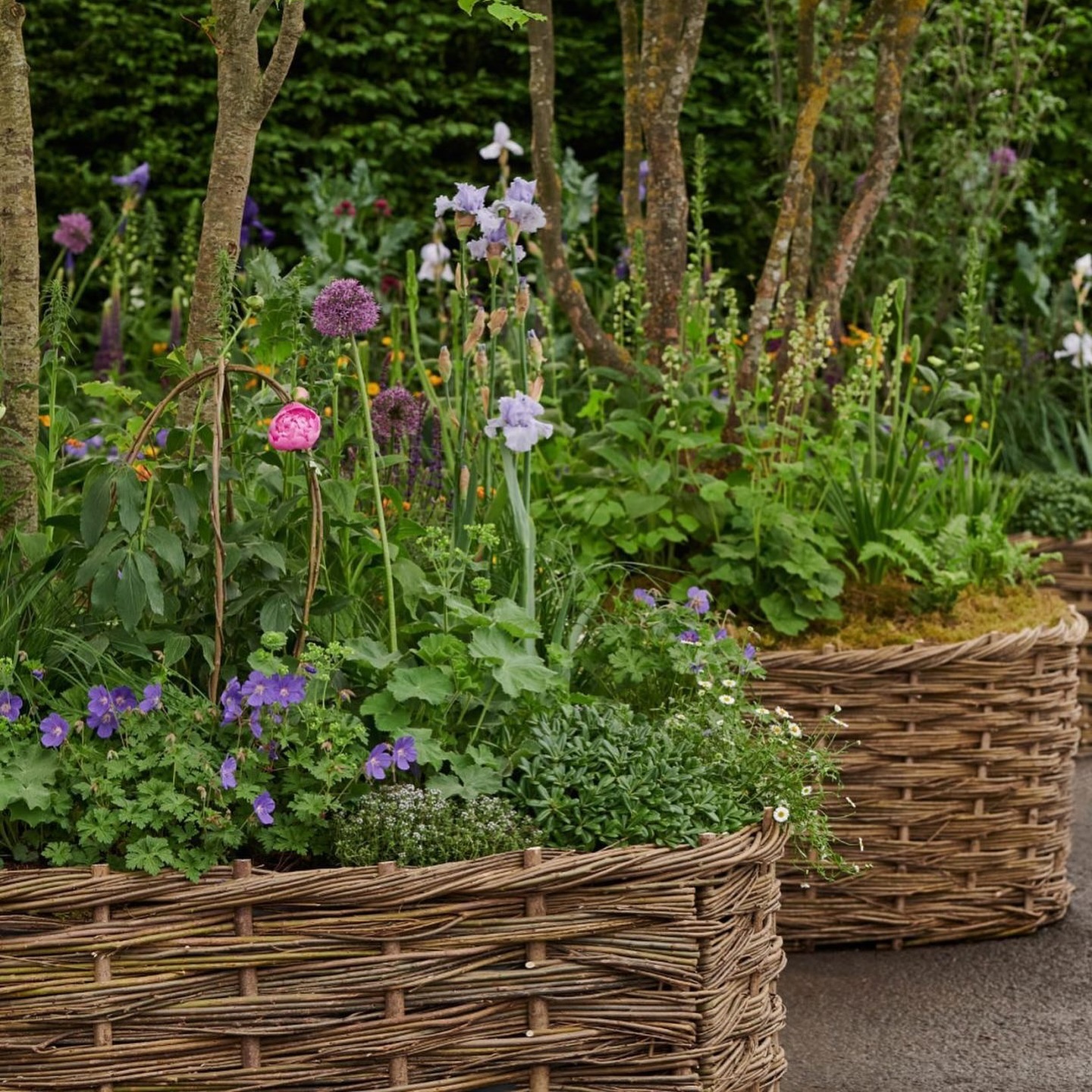
source @littleseasidefarm
If you’re looking for a more decorative and unique option, consider using wicker baskets as garden beds. These can be a chic addition to your garden, giving it a vintage or country-inspired aesthetic. Wicker baskets come in various sizes, so you can create small beds for flowers, herbs, or even small vegetables. They are lightweight, making them easy to move around, and the woven texture gives your garden a warm, rustic feel. Wicker baskets work especially well for container gardening, and they can be used for just about anything from annuals to perennials. You can also place them on patios or near doorways to add a charming touch.
11. Concrete Block and Wood Combo Bed
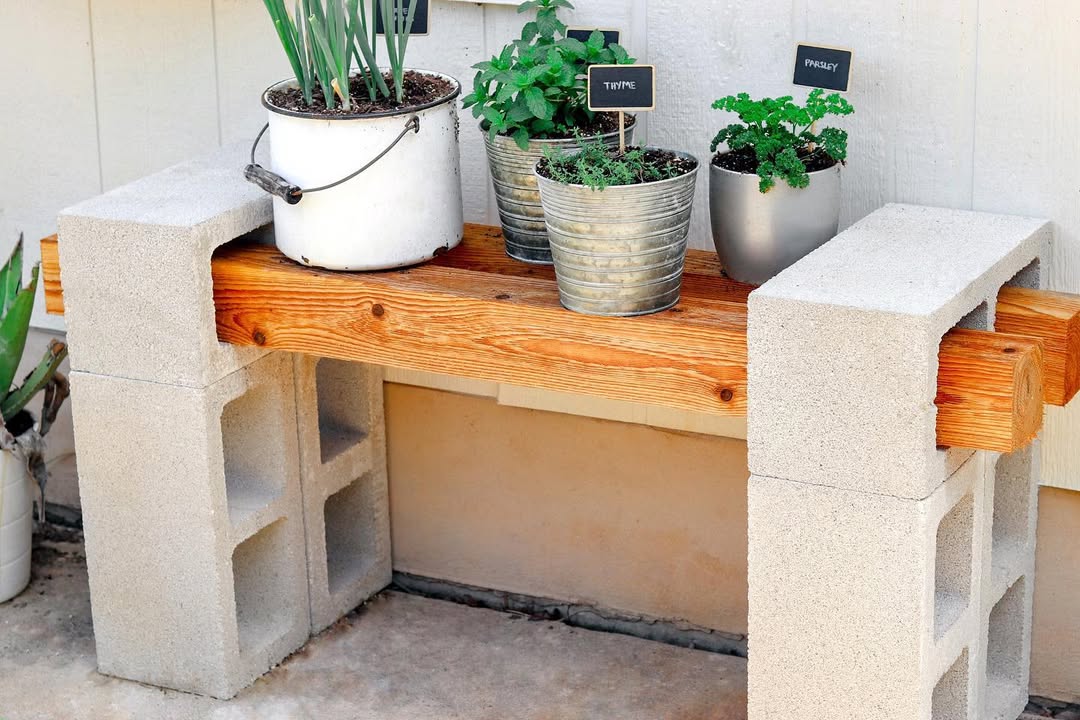
source @fabeveryday
For a more industrial look, a concrete block and wood combo garden bed is a practical and visually interesting option. This design uses concrete blocks as the foundation for the bed, offering a strong and durable structure, while the wooden planks add a rustic, charming appeal. The combination of the two materials results in a versatile design that works well in modern or contemporary garden spaces. Concrete blocks are stacked to form the base, and then wooden planks are placed on top to form the garden bed’s edge. This structure can also be customized to include a built-in seating area or a retaining wall for added functionality. This hybrid design offers both aesthetic appeal and durability, ensuring your garden bed will last for years without the need for constant upkeep.
12. Bricks and Mortar Garden Bed
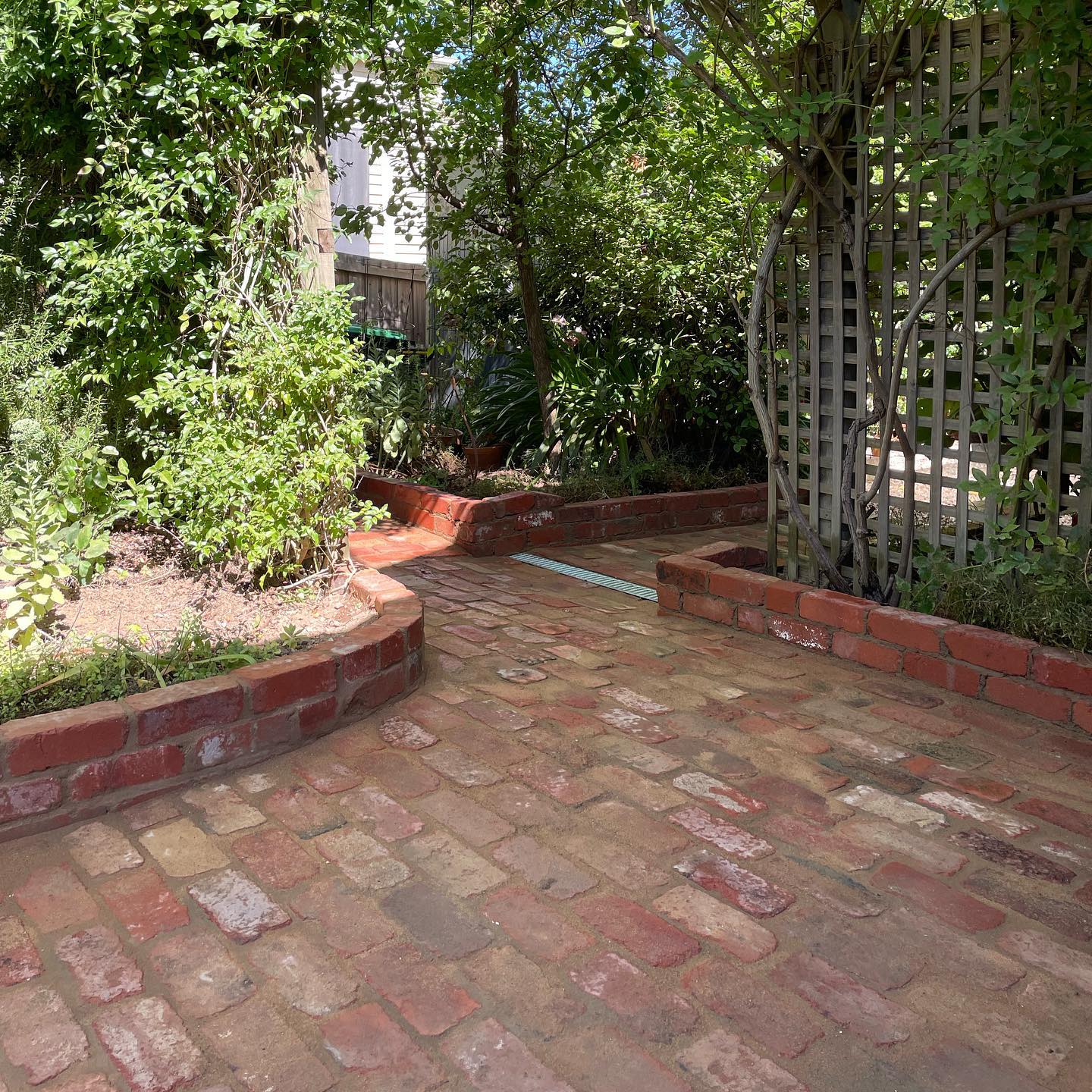
source @caswolfe_landscapes
A bricks and mortar garden bed exudes a sense of permanence and sophistication. The use of bricks allows for clean lines and precise shapes, perfect for a formal garden design. The mortar holds the bricks together, creating a stable and long-lasting structure. You can create a rectangular or circular bed, or even experiment with various shapes to match the design of your garden. Bricks offer excellent drainage and help retain moisture, which is crucial for the health of your plants. This type of garden bed is ideal for creating a neat, tidy look, and it works particularly well in cottage gardens or more formal settings. Bricks are also naturally weather-resistant, making this type of bed low-maintenance and durable over time.
13. Masonry Garden Bed
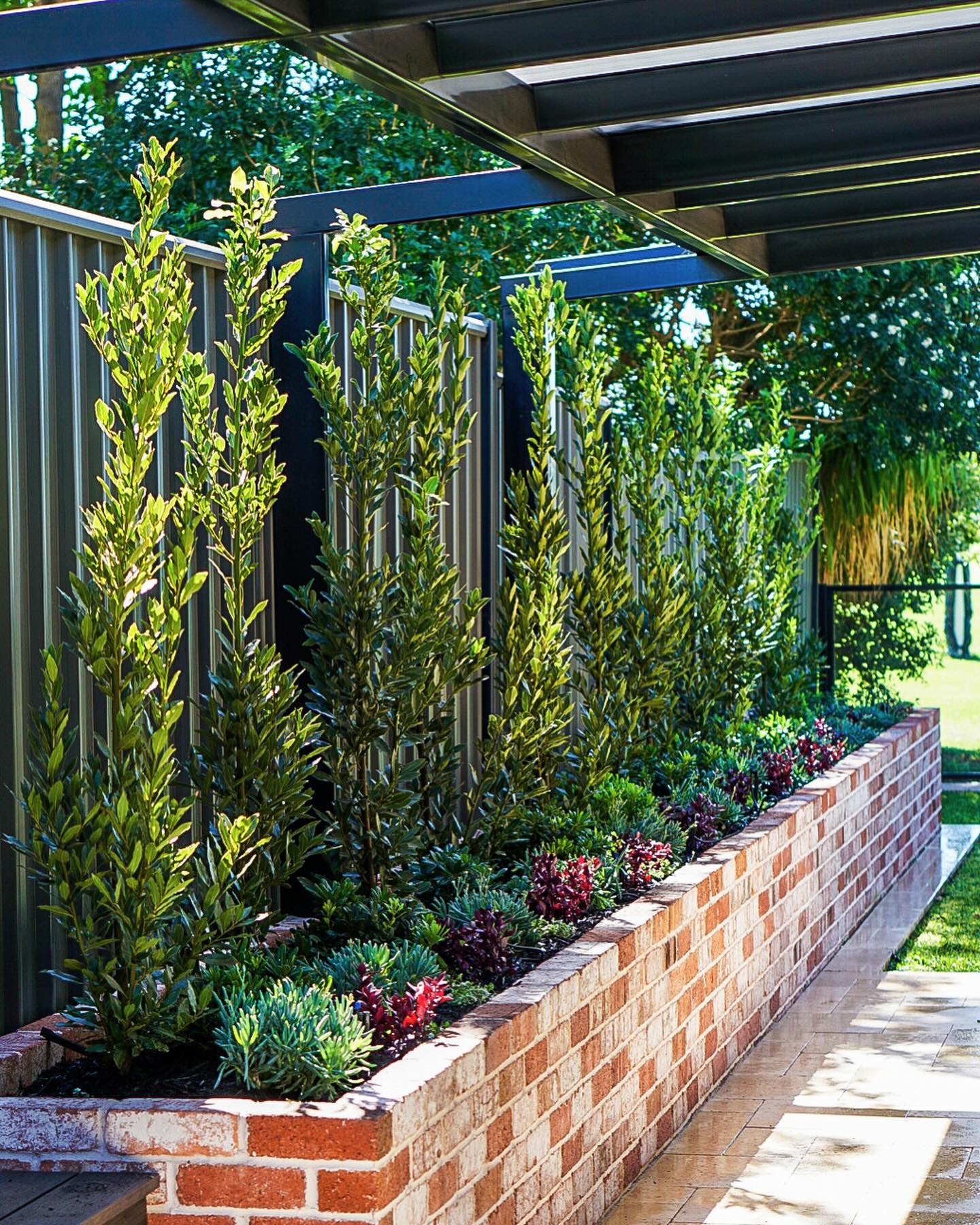
source @verge.landscapes
For those who are looking for something a bit more architectural, a masonry garden bed might be the ideal option. This design uses a variety of materials, such as stone, granite, or sandstone, to form the garden bed’s walls. The stones are often mortared together to create a solid structure that will hold up well in any weather conditions. Masonry beds are known for their elegance and sophistication and can be built into your landscape as either a raised bed or a series of terraced levels. The stone material provides excellent drainage, while the mortar holds everything in place. This type of garden bed can last for decades, making it a worthwhile investment for anyone who wants to add a more permanent feature to their yard or garden.
14. Wine Barrel Garden Bed
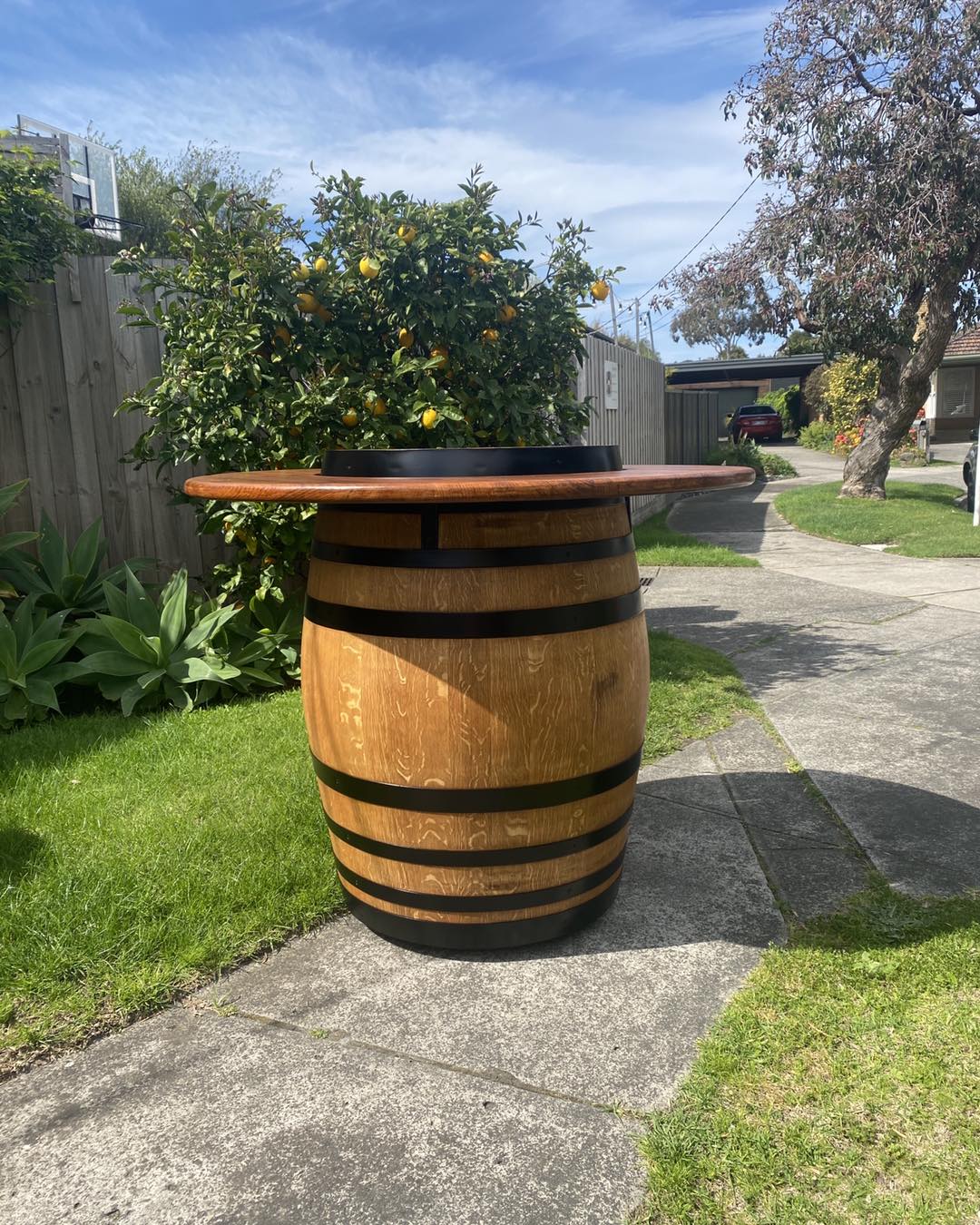
source @backyard_barrels
A wine barrel garden bed adds a rustic charm and vintage appeal to your garden. You can use a wooden wine barrel, which has been used to store wine, as a raised bed for plants. This style offers an aesthetic that’s perfect for country gardens, patios, and even small urban spaces. Simply cut the barrel in half, add soil, and plant your favorite flowers or vegetables inside. Wine barrels have a weathered look that adds character to the space. This design is especially great for growing herbs, flowers, or compact vegetables like lettuce and strawberries. The circular design allows for efficient root growth and gives your garden a cozy, whimsical vibe. Plus, wine barrels are relatively affordable and readily available from garden centers or online.
15. Plastic Raised Garden Bed
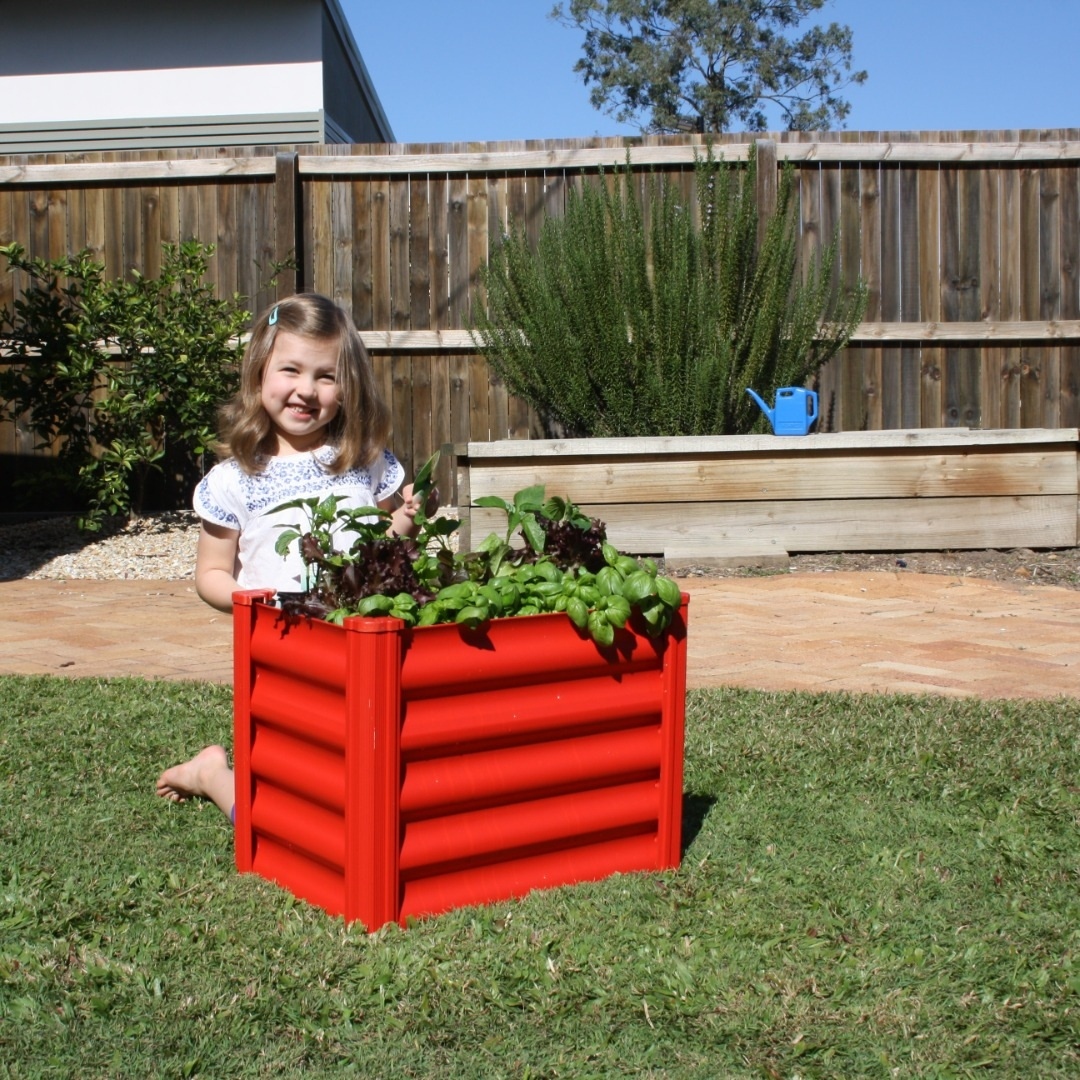
source @theorganicgardencoau
For a low-maintenance, lightweight option, plastic raised garden beds are a fantastic choice. These beds are made from high-density polyethylene or other durable plastics that are resistant to the elements. Plastic garden beds are easier to handle than wood or stone, and they won’t rot or warp over time. They come in various sizes, so you can easily find a style that suits your garden’s needs. Plastic beds are also UV-resistant, which means they will not degrade in the sun. These beds typically have built-in drainage systems, helping to prevent waterlogging and ensuring that your plants receive the perfect amount of moisture. Plastic garden beds are ideal for those who are just starting with gardening, as they are easy to set up and maintain.
16. Galvanized Steel Garden Bed
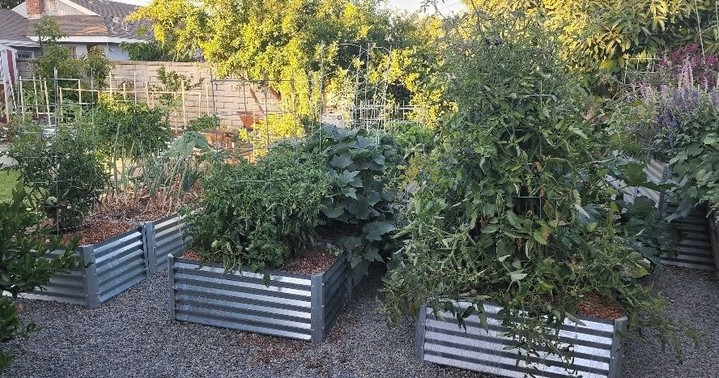
source @metalgardenbeds
Galvanized steel is an excellent material for garden beds because it’s incredibly durable and resistant to rust and corrosion. These beds often come in sleek, modern designs and can be purchased in various sizes. The galvanized steel helps retain moisture and keeps the soil temperature consistent, making it an excellent choice for a wide variety of plants. The steel’s high strength ensures that the bed will last for many years, even under harsh weather conditions. These garden beds are also lightweight compared to stone or concrete, making them easy to move if necessary. Their industrial appearance gives a modern and clean look to any garden or yard, while also being very low-maintenance.
17. Hollowed-Out Logs Garden Bed
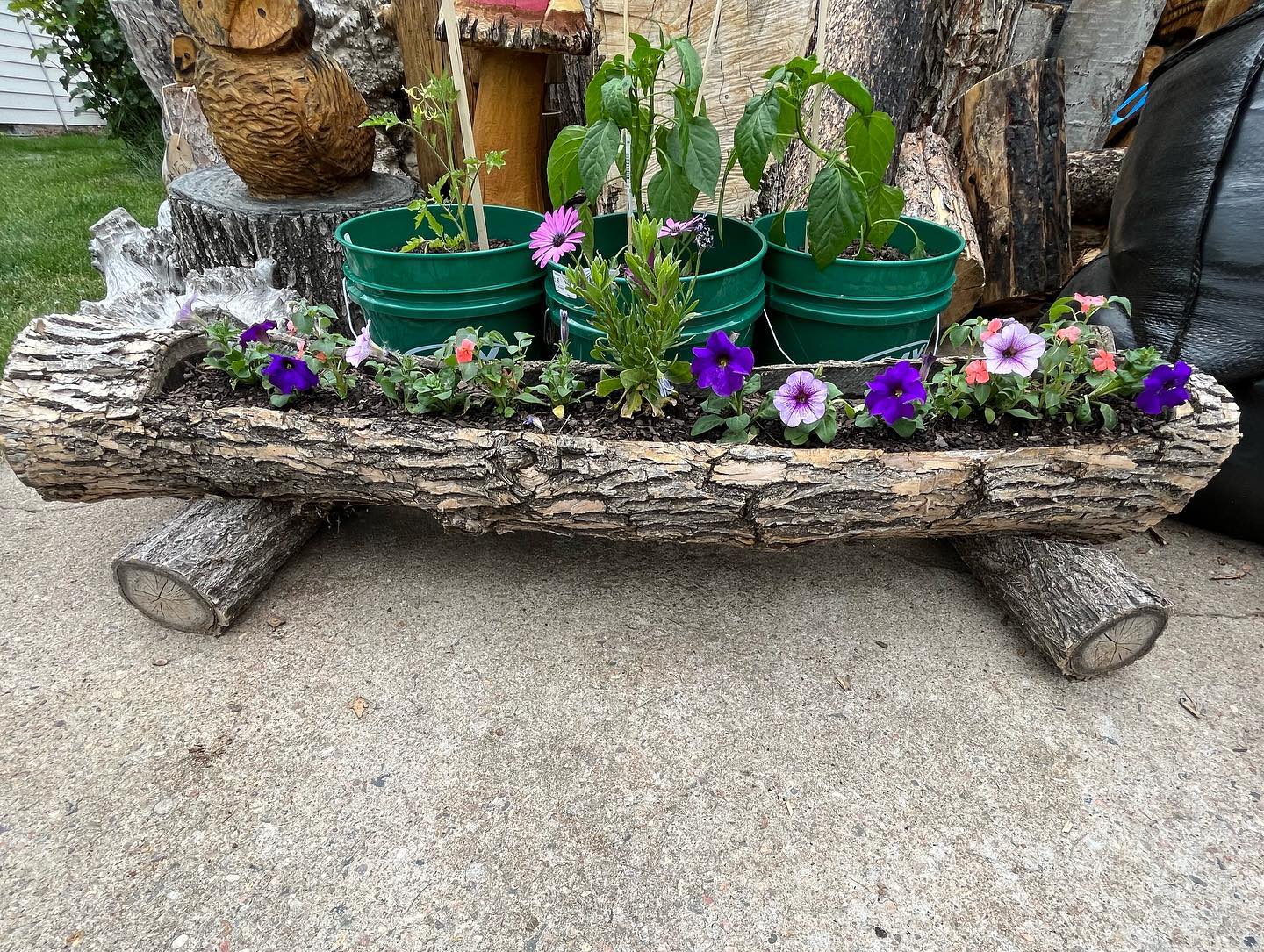
source @trevor.r18
If you love the idea of using natural materials, hollowed-out logs can make for an incredible DIY garden bed. This rustic design uses the hollowed interior of large logs as the planting space, offering a unique and organic garden bed solution. The exterior of the logs provides a charming, natural aesthetic that blends perfectly with woodland or forest-inspired landscapes. These logs not only look stunning but also provide a solid foundation for plant roots. The hollow center gives the plants plenty of space to grow, and the log material itself acts as a natural insulator, keeping plants cooler in the summer and warmer in the winter. To create this bed, simply find large logs, hollow them out with tools, and fill them with soil. It’s a creative and sustainable way to repurpose natural materials.
18. Pallet Vertical Garden Bed
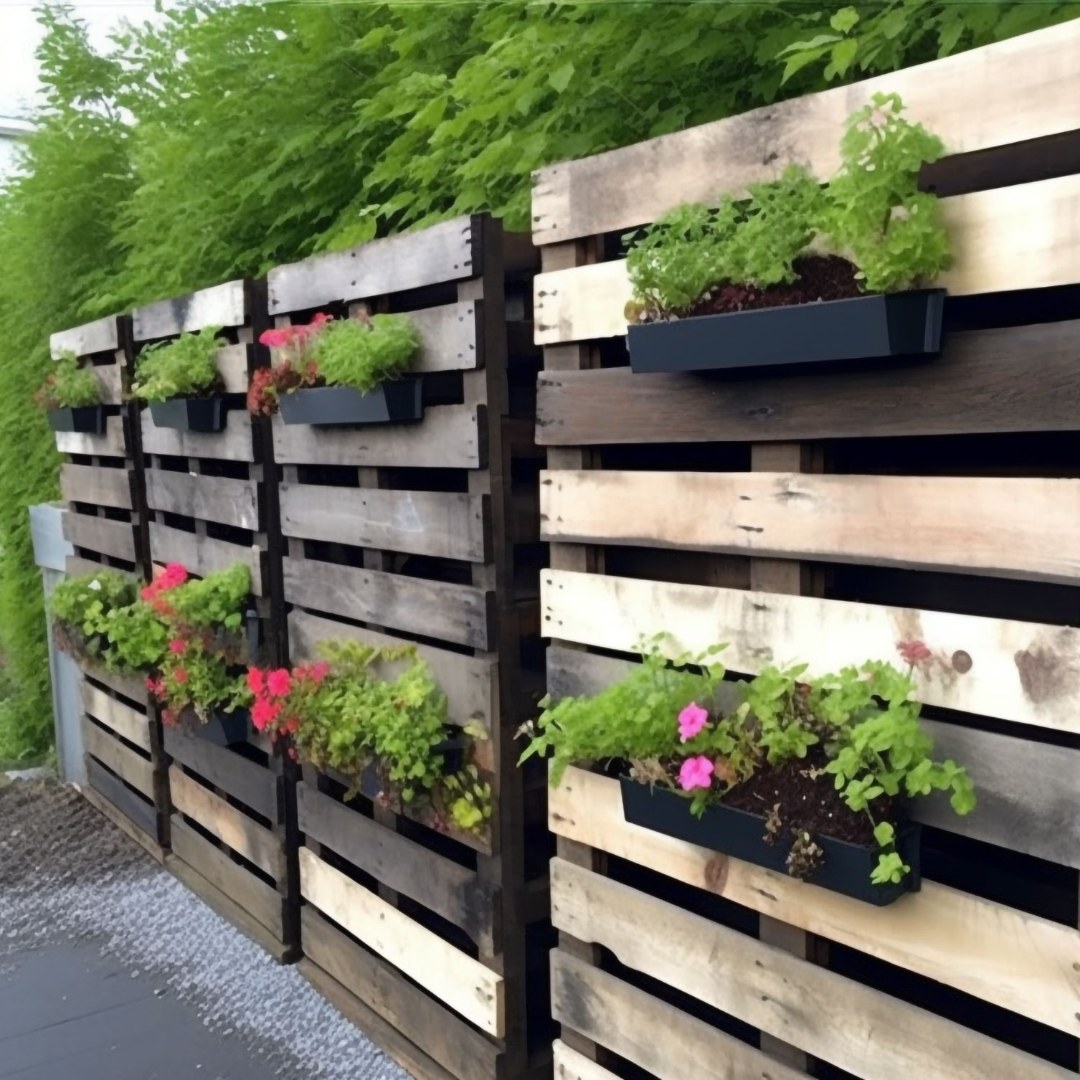
source @offgridworld
Wooden pallets can be stacked vertically to create a multi-level garden bed, perfect for small spaces or anyone who loves a vertical growing system. By securing the pallets to a frame and filling each section with soil, you create individual planting areas that allow plants to grow upwards. Pallet vertical beds are ideal for growing smaller plants like herbs, lettuce, strawberries, or even flowers. The vertical structure makes it easy to harvest your crops without bending over, making gardening more ergonomic. Pallet garden beds also encourage better airflow around the plants, helping to prevent disease and pests. To make your pallet vertical garden even more aesthetically pleasing, you can paint the pallets in vibrant colors or leave them with a weathered, natural look.
19. Recycled Tire Garden Bed
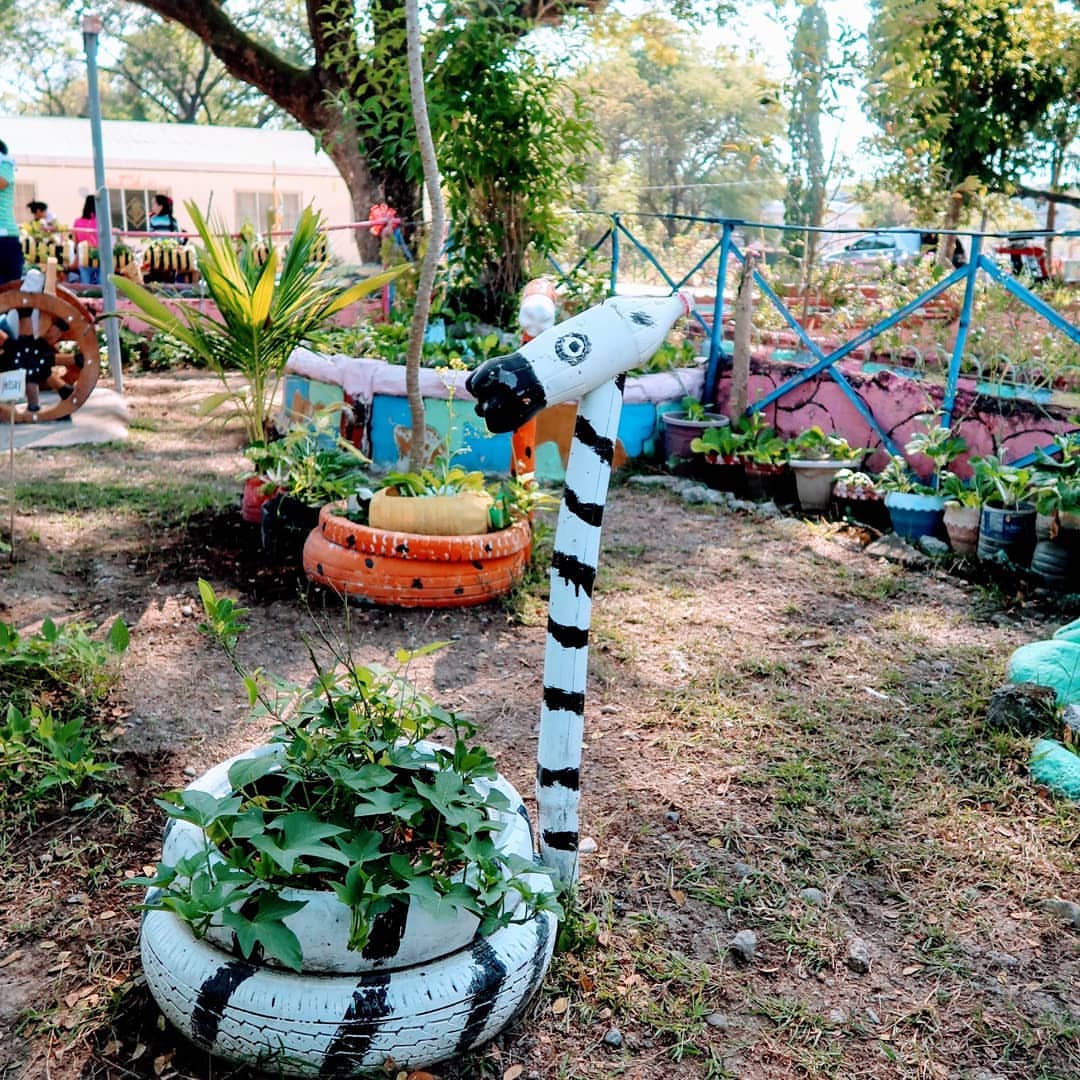
source @thegardenerwife
Recycled tires offer a unique and eco-friendly option for building garden beds. These tires are often used to create circular raised beds, and they’re stacked on top of each other to form a contained area for planting. Tires are durable, weather-resistant, and help retain moisture, making them a practical solution for gardening. They also create a striking visual effect when used as part of a larger landscape design. You can also cut the tires into smaller sections to make smaller garden beds or use them as planters for flowers. When using tires for garden beds, be sure to line the inside with landscape fabric to prevent weeds from growing and to keep the soil contained. This is an especially great option for those who want to recycle and repurpose materials they already have at home.
20. Raised Bed with Fencing
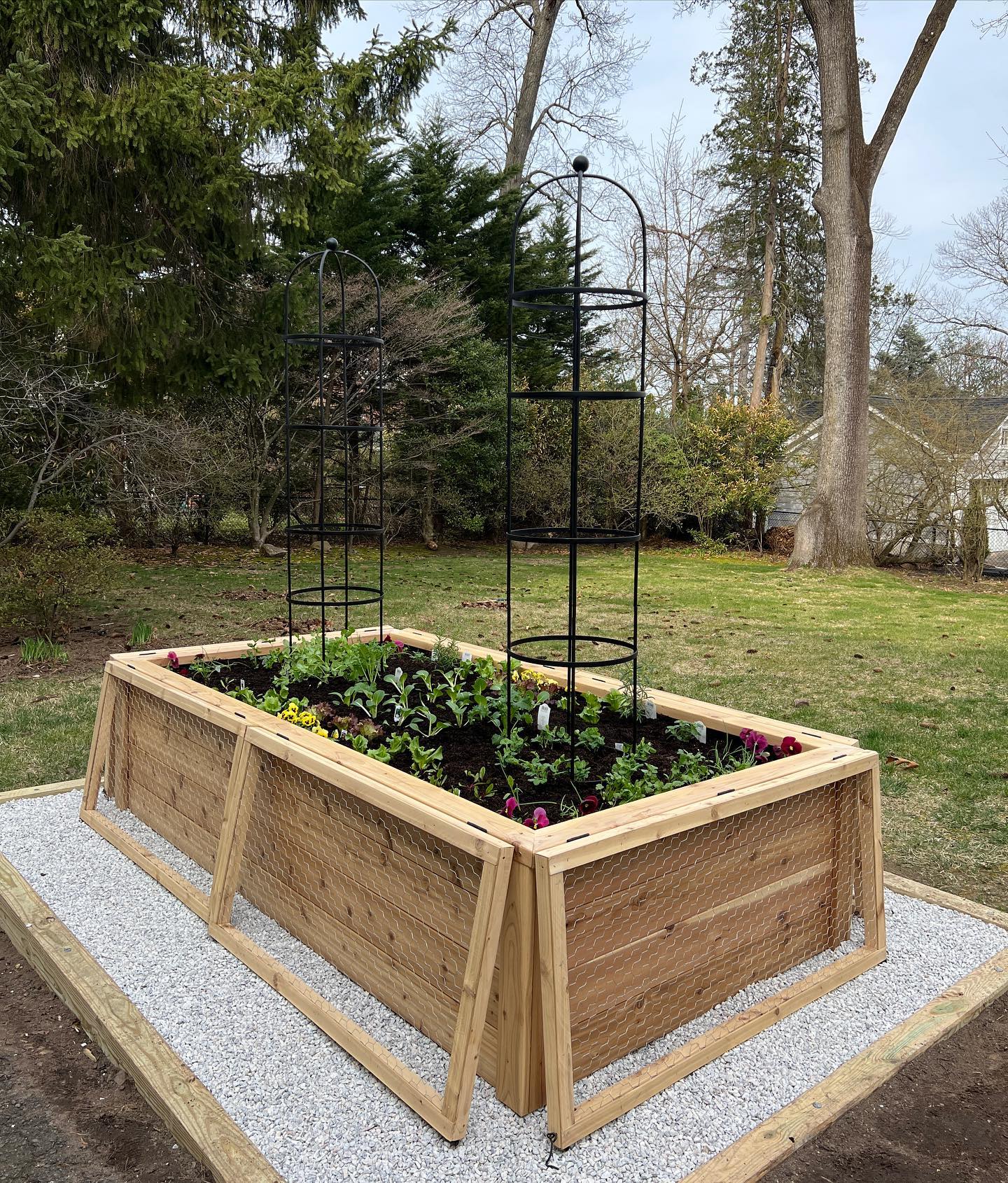
source @reshgala
If you’re concerned about protecting your plants from wildlife, consider building a raised garden bed that’s surrounded by a protective fence. The raised bed structure itself helps with soil control, and the fencing keeps out animals like rabbits and deer. The fence can be made from various materials, such as wood, wire mesh, or even plastic, depending on your needs. This type of garden bed is ideal for growing fruits, vegetables, and herbs that are prone to being eaten by pests. By combining a raised bed with fencing, you can enjoy the benefits of easy access to your plants while ensuring they stay safe and protected from unwanted visitors.
21. Rock Garden Bed
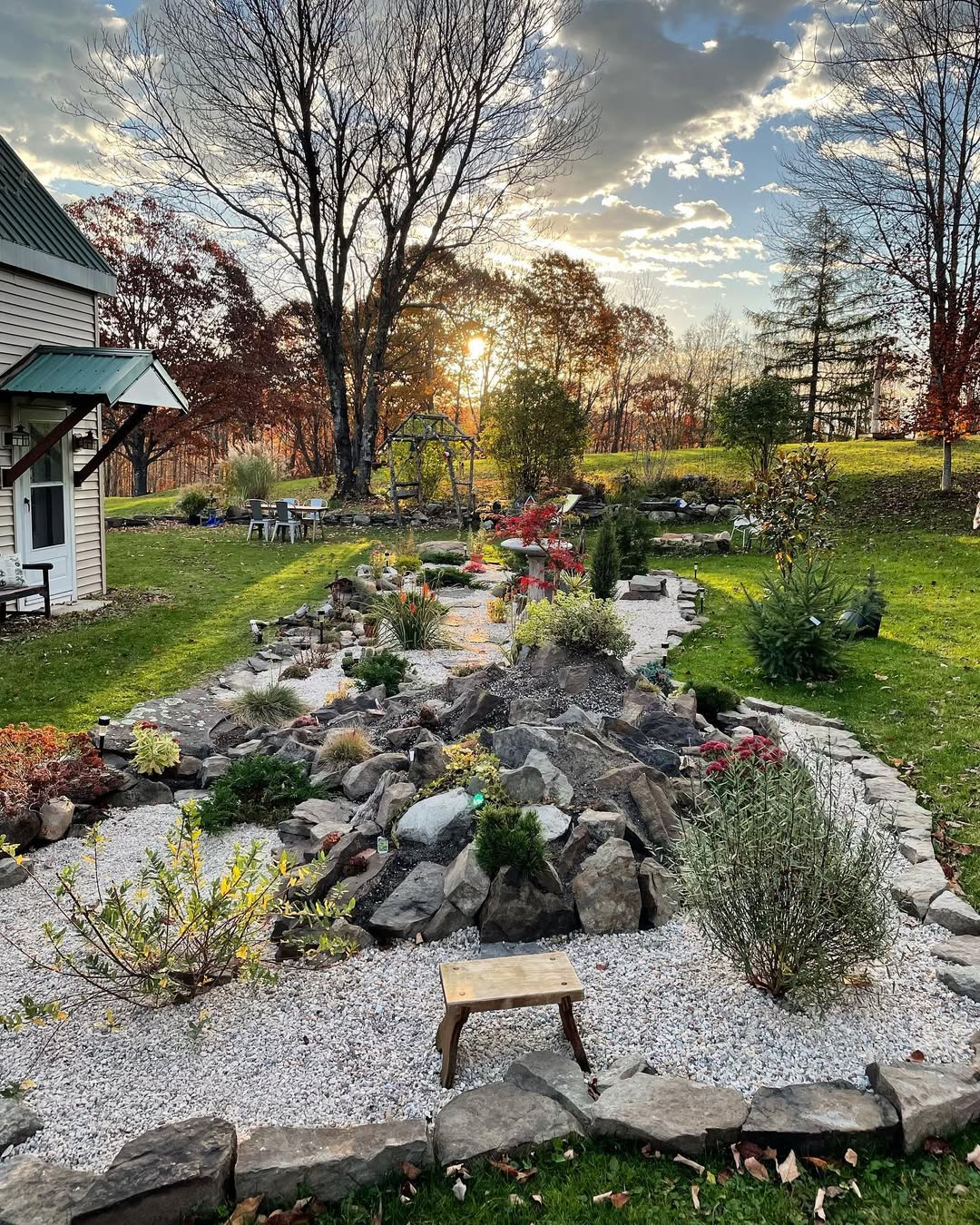
source @eddyds
For a natural, earthy look, a rock garden bed can be a great DIY project. Rock garden beds use a variety of stones and pebbles to create a beautiful, textured planting space. The stones can be arranged in patterns or simply scattered around to form a bed for smaller plants, succulents, or alpine plants. This design works particularly well in dry or low-maintenance gardens, as rocks help retain moisture and reduce the need for frequent watering. The sharp edges of the rocks also discourage weeds from growing, while their natural appearance blends beautifully with the surrounding landscape. A rock garden bed is ideal for creating a serene, minimalist outdoor space that requires little upkeep.
22. Straw Bale and Raised Bed Combo
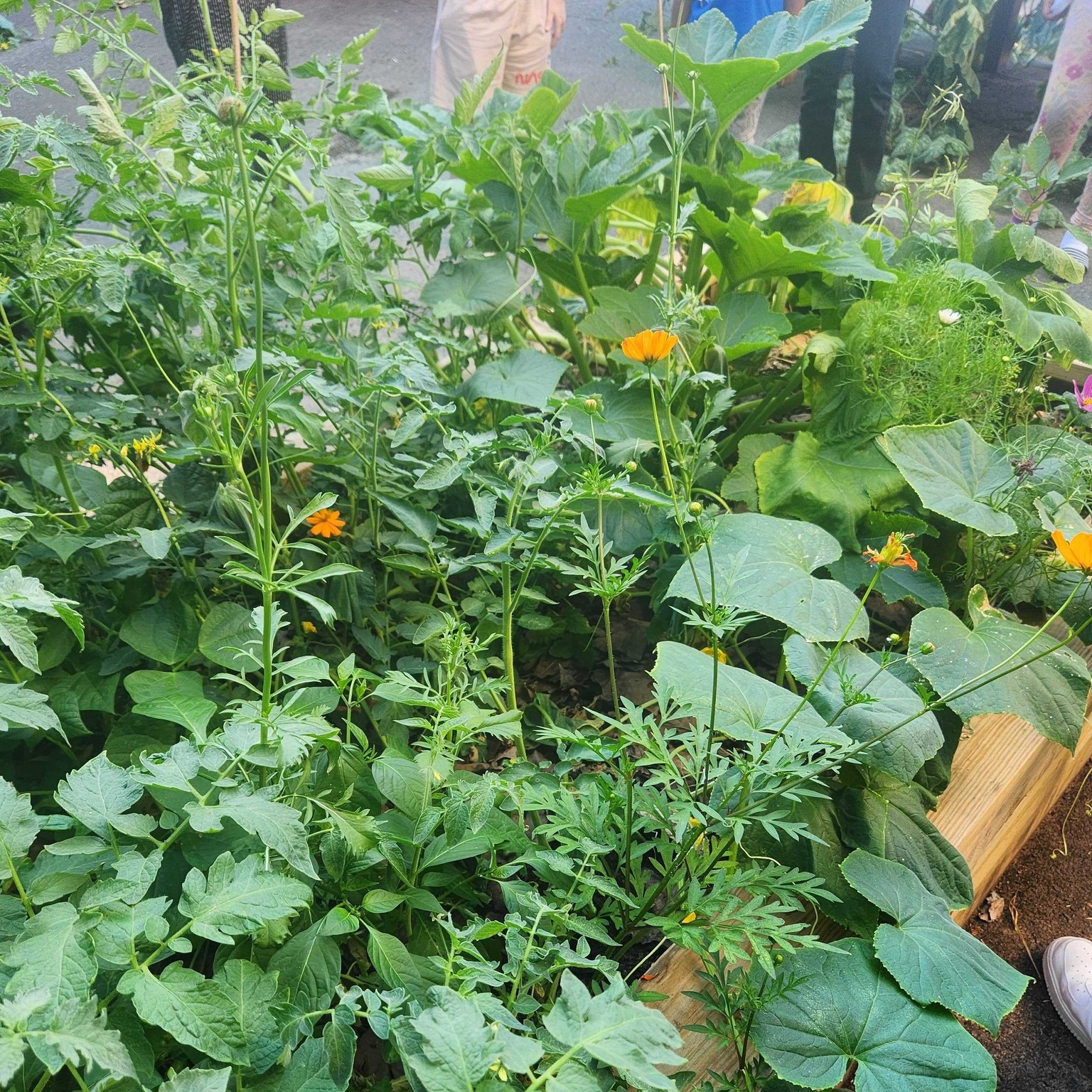
source @calmandconfidence
For an innovative and efficient garden bed solution, you can combine straw bales with traditional raised beds. This hybrid design involves setting up a raised bed as the base, and then using straw bales around the perimeter to add additional height and insulation. The straw bales act as a natural mulch, retaining moisture and keeping the soil temperature consistent. This combination is great for areas with extreme temperatures, as the straw helps keep the plants cool in the summer and warm in the winter. The raised bed offers excellent drainage, while the straw helps prevent weeds and adds organic matter to the soil. It’s a perfect solution for gardeners looking to extend their growing season while keeping maintenance low.
23. Gutter Garden Bed
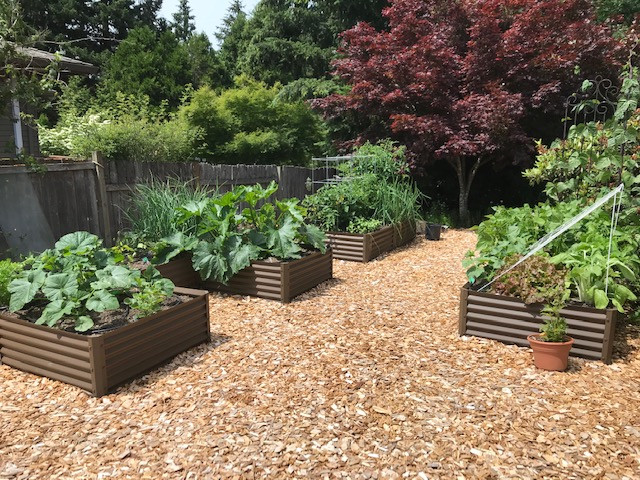
source @metalgardenbeds
For those with limited space, a gutter garden bed is a smart and creative solution. You can repurpose old rain gutters by hanging them vertically or along a fence to create an elevated bed that’s perfect for growing herbs, small flowers, or compact vegetables. The gutters provide excellent drainage and are easy to install. The vertical design makes it easier to access your plants, and it’s also a great way to utilize small or unused spaces like balconies, patios, or narrow walkways. Gutter garden beds are also highly customizable, so you can arrange them however you like. They make a practical and fun addition to any urban garden.

